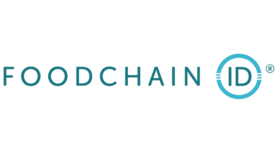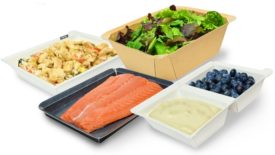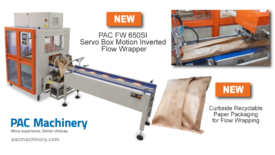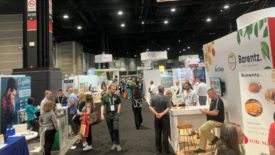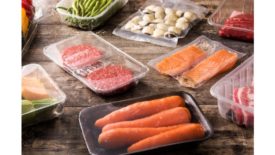Home » Keywords: » sustainable packaging
Items Tagged with 'sustainable packaging '
ARTICLES
Eastman and Sealed Air partner on an alternative to polystyrene trays.
Read More
FoodChainID offers new Sustainable Packaging Services suite
Sustainable Packaging Services combines new and existing digital services that enable manufacturers to monitor and respond to changing global regulations on sustainable packaging.
Read More
Aptar - Food Protection partners with Halopack on recyclable, fiber-based tray system
This patented solution is produced with recycled cardboard and a minimal amount of easily removable film.
Read More
IFCO acquires reusable-packaging pooling company BEPCO
BEPCO operates a successful meat crate pool in the Baltics.
Read More
PAC Machinery offers plastic alternative for flow wrapping
New technology gives industries that flow-wrap an alternative to plastic packaging on horizontal flow wrappers.
Read More
Meijer invites environmentally focused suppliers to participate in upcoming Sustainability Summit
Retailer seeks to expand its commitment to sustainable products.
Read More
Glenroy unveils leadership transition
Katie Juehring, third-generation owner, is the new chief executive officer.
Read More
IFT First session addresses sustainable packaging complications
Recyclability is not a one-size-fits-all subject.
Read More
TekniPlex Consumer Products obtains ISCC Plus Certification for Dublin, Va. manufacturing facility
ISCC Plus is a globally recognized system for verifiable traceability of recycled materials throughout the supply chain.
Read More
Melodea’s sustainable barrier coating boosts food packaging recyclability
Melox NGen is designed specifically for use on plastic.
Read More
Get our new eMagazine delivered to your inbox every month.
Stay in the know with The National Provisioner's comprehensive coverage of the meat and poultry processing industry.
SUBSCRIBE TODAY!Copyright ©2024. All Rights Reserved BNP Media.
Design, CMS, Hosting & Web Development :: ePublishing
.jpg?height=168&t=1713948168&width=275)
